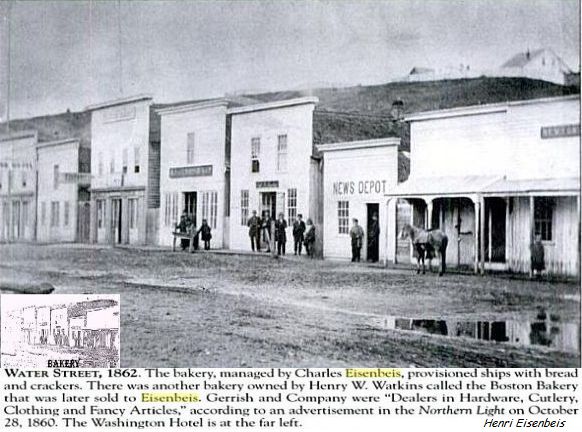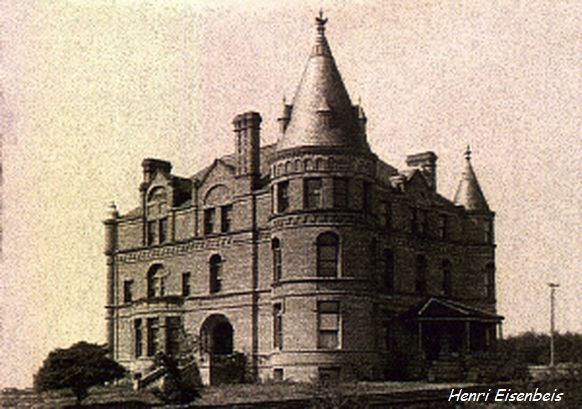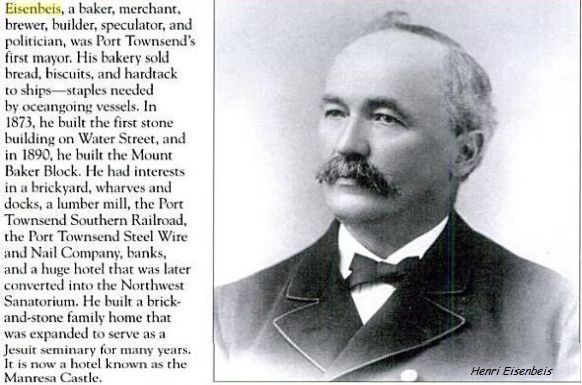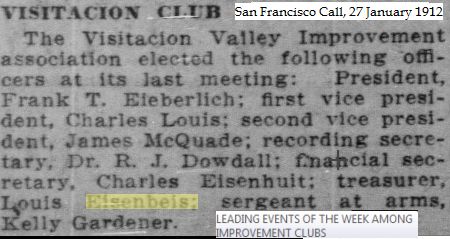|
From Spiesermühle to
Port Townsend, Washington
The history of a pioneer.
Charles Eisenbeis was
born 10 July, 1832, in Spiesen-Elversberg, (in Neunkirchen, Saarland, Germany
situated approx. 4 km southwest of Neunkirchen, and
15 km northeast of Saarbrücken). His parents
operated a mill called Spiesermühle, (clic over drawing on
right).
His grandfather, Johann
Christian EISENBEIS, was a victim
of the French Revolution. A part of the family
died of an epidemic of French troops of Napoleon,
returning from the retreat from Russia. His
father, Valentin (Johann
Georg Valentin EISENBEIS),
comes from 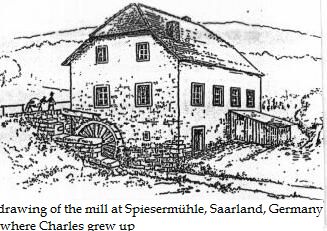 the
mill of his parents at Wellesweiler. Having lost his
wife one year after his marriage Valentin lives with
Catherine Krohn and from this connection born three
illegitimate children, Henrietta, Frederick and Charles.
Relatives marry. The couple will have again six children
including Ludwig and Sophie. In the Eisenbeis family,
two members have already
emigrated the United States, one in 1821
with six children, the other in 1822 with two children.
At the age of 24, Charles and his older brother of two
years, Frederick, bent on adventure decide to head
for America. The trip will be long: join Nancy where the
train Strasbourg-Paris recently put in service will take
them to Paris, then Paris-Le Havre where it is necessary
to distrust thieves that target particularly foreigners
who have money, because they have to pay the crossing
and the food. the
mill of his parents at Wellesweiler. Having lost his
wife one year after his marriage Valentin lives with
Catherine Krohn and from this connection born three
illegitimate children, Henrietta, Frederick and Charles.
Relatives marry. The couple will have again six children
including Ludwig and Sophie. In the Eisenbeis family,
two members have already
emigrated the United States, one in 1821
with six children, the other in 1822 with two children.
At the age of 24, Charles and his older brother of two
years, Frederick, bent on adventure decide to head
for America. The trip will be long: join Nancy where the
train Strasbourg-Paris recently put in service will take
them to Paris, then Paris-Le Havre where it is necessary
to distrust thieves that target particularly foreigners
who have money, because they have to pay the crossing
and the food.
In 1856 he
disembarks to Rochester, New York. His older brother,
Frederick, is always with him.
From his family, Charles had learned the trade of baker,
and he rapidly prospered in this trade while in Rochester.
During the height of the Gold Rush, Charles, decides to
head west. Despite the apprehension of the trip, and the
fact that he is prone to seasickness, he decides to travel
to the west coast by the sea. The daughter of Frederick,
Miss Lena, declares just before her death that Charles
traveled to San Francisco by sailing around Cape Horn. The
intended destination of the trip is Steilacoom, today a
very small city close to Tacoma to the south west of
Seattle. Steilacoom is to the bottom of the estuary Puget
Sound, very steep estuary. The trip is undertaken on a
slow and small sailboat, the Big Cyprus. In
February 1858, approaching the Puget Sound, a tempest
rages and during six days it is impossible to approach the
coast. The seventh day the wind falls, but then heavy fog
settled in. The captain lands instead at Port Townsend ,
small port to the entry of Puget Sound. Charles Prosch, a
passenger, describes this trip. On the top deck he
notices a man, Charles Eisenbeis, who is clearly sick, who
asks to the captain how much time will be necessary to
arrive at Steilacoom. The captain, stoic, replies: " I
don't know but the trip has never lasted more three weeks,
I think perhaps two weeks". Charles exclaims with a
pronounced accent: "Oh mein Gott! I goes overpoard! ".
Thus Charles interrupts his trip and disembarks to Port
Townsend.
Without money, and with his brother Frederick, Charles
begins by doing odd jobs to survive. At that time, the
closest supply for bread was Portland, Oregon, so after
a few short months of saving money from his odd jobs, he
opened The Pioneer Bakery" selling crackers and
ships' bread. 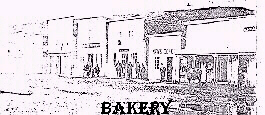 The business quickly
prospered. The site of this shop is found in the site of
the magnificent building, 314-316 Water Street. Two
later years he finally makes it to Steilacoom, again
with his brother. He exerts the same trade successfully
during five years. He returns alone to Port Townsend.
Port Townsend was growing rapidly during this period. In
1859, there were only three hundred residents in the
city, by 1890 there will be seven thousand residents. He
buys the site of his first shop. He continues in the
trade of making bread, but expands to include the sale
of animal feed. He built on the site the first building
in stone. It is the beginning of constructions
realized by Charles, 1873 the building to the corner of
Tylers and Water Street that will be occupied during 12
years by State's customs, quays between Taylors and Van
Burens Street that improves the appearance of the city;
1884 a building between Quincy and Water Street. 1890
the Mount Baker Block to the corner of Water and Taylors
Street the greatest building of the city; several small
residential and commercial real estate. In 1889 he had
constructed a manufacture of bricks that fed in material
all the city. He realizes the Union Wharf that is an
immense commercial quarter by the long of " wharf
Eisenbeis". He becomes the lead of the "Group of the
Five", the Big Five Syndicate, five persons that control
all the economy of the city: the entry ports along the
wharfs, the railroad, the first National Bank, several
small commercial banks, the steelworks. There is some
confusion about the time he married. One account states
that he married Elisabeth Berghauser, a native of
Prussia, in San Francisco in 1856. Another belief is
that he met and married her in Port Townsend at a later
date. Elisabeth died in 1882, survived by Charles, two
sons and two daughters; Charles Jr, Frederick, Sophia,
and Luise. Charles later marries Kate E. Hughs (nee
Marsh), a native of England. Charles and Kate have four
children, Lillian, Otto, Hilda, and Josephine. There is
also some question as to when Charles and Frederick's
brother Ludwig and sister Sophie joined them in Port
Townsend either traveled with them or have joined them
later. One will find them on a list of persons residing
Port Townsend under the name of Louis and Sophie
Eisenbeis in 1870, and in 1875 in the San Francisco Call
Newspaper, there is a listing of the marriages of Louis
Eisenbeis to Catharine Bitterle, and "Sopia" Eisenbeis
to August Leemann.
The business quickly
prospered. The site of this shop is found in the site of
the magnificent building, 314-316 Water Street. Two
later years he finally makes it to Steilacoom, again
with his brother. He exerts the same trade successfully
during five years. He returns alone to Port Townsend.
Port Townsend was growing rapidly during this period. In
1859, there were only three hundred residents in the
city, by 1890 there will be seven thousand residents. He
buys the site of his first shop. He continues in the
trade of making bread, but expands to include the sale
of animal feed. He built on the site the first building
in stone. It is the beginning of constructions
realized by Charles, 1873 the building to the corner of
Tylers and Water Street that will be occupied during 12
years by State's customs, quays between Taylors and Van
Burens Street that improves the appearance of the city;
1884 a building between Quincy and Water Street. 1890
the Mount Baker Block to the corner of Water and Taylors
Street the greatest building of the city; several small
residential and commercial real estate. In 1889 he had
constructed a manufacture of bricks that fed in material
all the city. He realizes the Union Wharf that is an
immense commercial quarter by the long of " wharf
Eisenbeis". He becomes the lead of the "Group of the
Five", the Big Five Syndicate, five persons that control
all the economy of the city: the entry ports along the
wharfs, the railroad, the first National Bank, several
small commercial banks, the steelworks. There is some
confusion about the time he married. One account states
that he married Elisabeth Berghauser, a native of
Prussia, in San Francisco in 1856. Another belief is
that he met and married her in Port Townsend at a later
date. Elisabeth died in 1882, survived by Charles, two
sons and two daughters; Charles Jr, Frederick, Sophia,
and Luise. Charles later marries Kate E. Hughs (nee
Marsh), a native of England. Charles and Kate have four
children, Lillian, Otto, Hilda, and Josephine. There is
also some question as to when Charles and Frederick's
brother Ludwig and sister Sophie joined them in Port
Townsend either traveled with them or have joined them
later. One will find them on a list of persons residing
Port Townsend under the name of Louis and Sophie
Eisenbeis in 1870, and in 1875 in the San Francisco Call
Newspaper, there is a listing of the marriages of Louis
Eisenbeis to Catharine Bitterle, and "Sopia" Eisenbeis
to August Leemann.  On February 12, 1878, Charles was
elected as the first mayor of the Port Townsend, serving
three terms. He was also twice the treasurer of the city
and member of the Health Commission . The article "a
History of the state of Washington" written by
H.K. Hines published in 1893 ends thus: here is summary
the life of the most representative man of Port Townsend
that with his perseverance, his ambition, the senses of
business has conquered poverty, has made a real fortune
and has acquired a respectable worthiness. Others,
however, have been far less kind. During the depression
of the 1890's, America took it's first step to the
socialist left. Leftist, denouncing all businessman as
greedy and labeling productive citizens as "Robber
Barons". This social mood continued to cause great
problems for businessmen, and many businesses in Port
Townsend failed. With the decline in business, the
planned railroad line bypassed Port Townsend
contributing further to the decline business. In
anticipation of the railway, Charles built the
magnificent "Hotel Eisenbeis" with 120 bedrooms and 250
meter of veranda overlooking the proposed railroad
terminal. The hotel never opened and was later
suspiciously destroyed by fire. As a major holder of
property in Port Townsend, Charles was hit more severely
by the depression than other local businessmen. To
continue paying for the services demanded by the
socialists controlling the city at that time, property
taxes were imposed and continued to increase. On February 12, 1878, Charles was
elected as the first mayor of the Port Townsend, serving
three terms. He was also twice the treasurer of the city
and member of the Health Commission . The article "a
History of the state of Washington" written by
H.K. Hines published in 1893 ends thus: here is summary
the life of the most representative man of Port Townsend
that with his perseverance, his ambition, the senses of
business has conquered poverty, has made a real fortune
and has acquired a respectable worthiness. Others,
however, have been far less kind. During the depression
of the 1890's, America took it's first step to the
socialist left. Leftist, denouncing all businessman as
greedy and labeling productive citizens as "Robber
Barons". This social mood continued to cause great
problems for businessmen, and many businesses in Port
Townsend failed. With the decline in business, the
planned railroad line bypassed Port Townsend
contributing further to the decline business. In
anticipation of the railway, Charles built the
magnificent "Hotel Eisenbeis" with 120 bedrooms and 250
meter of veranda overlooking the proposed railroad
terminal. The hotel never opened and was later
suspiciously destroyed by fire. As a major holder of
property in Port Townsend, Charles was hit more severely
by the depression than other local businessmen. To
continue paying for the services demanded by the
socialists controlling the city at that time, property
taxes were imposed and continued to increase.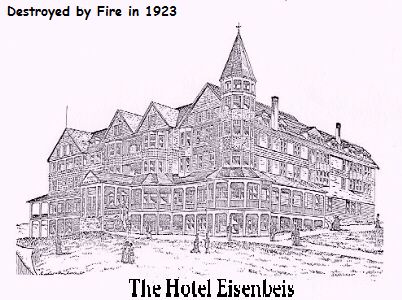 Charles' tax assessment for
1890 was reported to be $82,525.00. But Charles remained
optimistic and refused to abandon his town. Even with
much of the business ventures failing, Charles and his
friend Joe Kuhn donated property and building materials
for construction of Charles' tax assessment for
1890 was reported to be $82,525.00. But Charles remained
optimistic and refused to abandon his town. Even with
much of the business ventures failing, Charles and his
friend Joe Kuhn donated property and building materials
for construction of 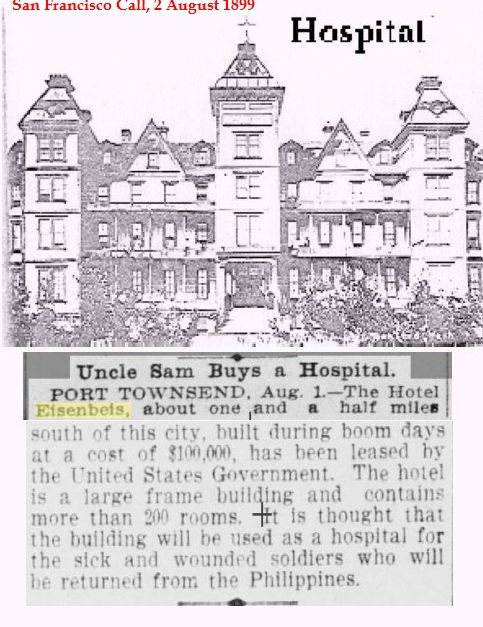 Hospital in
1890, and in 1892, Charles used the last brick produced
by his brickyard to construct a magnificent main home of
three floors in brick and stone, with a roof in slate
and with the best comfort of that period in which he
will live with his family to finally rest after a well
active 35 years long life of a pioneer. Charles died 9
March 1902, survived by eight children and his second
wife. The day of funeral, the family received a telegram
announcing the death of Charles' brother, Frederick, who
had remained in Steilacoom. "The newspaper, "Morning
Leader" stated in a column in its 13 March 1902 issue
that there was a special town council meeting was called
to eulogize Charles Eisenbeis". Hospital in
1890, and in 1892, Charles used the last brick produced
by his brickyard to construct a magnificent main home of
three floors in brick and stone, with a roof in slate
and with the best comfort of that period in which he
will live with his family to finally rest after a well
active 35 years long life of a pioneer. Charles died 9
March 1902, survived by eight children and his second
wife. The day of funeral, the family received a telegram
announcing the death of Charles' brother, Frederick, who
had remained in Steilacoom. "The newspaper, "Morning
Leader" stated in a column in its 13 March 1902 issue
that there was a special town council meeting was called
to eulogize Charles Eisenbeis".

In 1905, Kate Eisenbeis remarried and the castle was
left empty for almost 20 years except for a caretaker.
In 1925, a Seattle attorney bought the Castle as a
vacation place for nuns teaching in Seattle schools.
This plan did not work out well and in l927 the Jesuit
priests purchased the building for use as a training
college The priests spent their sixteenth and final year
of training here studying ascetic theology. In 1920, the
Jesuits added a large wing housing a chapel and sleeping
rooms. They also installed the elevator (an Otis) at, a
cost of $3,400 -- a substantial sum in those days. When
their addition was complete, t he Jesuits stuccoed over the
bricks of the original portion to give the building a
more uniform look. They named the complex "Manresa Hall"
after the town in Spain where Ignatius Loyola founded
the order. The Jesuits left in l968 and the building was
converted into a hotel, known as "Manresa
Castle",. The three different owners since l968
have all done their part to lovingly renovate the
building to modern standards while maintaining its
Victorian elegance. For example, there were only 3
bathrooms when the Jesuits left, today there are 43. he Jesuits stuccoed over the
bricks of the original portion to give the building a
more uniform look. They named the complex "Manresa Hall"
after the town in Spain where Ignatius Loyola founded
the order. The Jesuits left in l968 and the building was
converted into a hotel, known as "Manresa
Castle",. The three different owners since l968
have all done their part to lovingly renovate the
building to modern standards while maintaining its
Victorian elegance. For example, there were only 3
bathrooms when the Jesuits left, today there are 43.

Sources
of information for the above: Henri & Dennis
EISENBEIS, and others have references about
Charles.
1) Henri Eisenbeis "third part of an article wrote
September 19, 1996 to be publishing in
the"Saarheimat" a magazine of Neunkirchen area,
ancestor's region of Charles Eisenbeis"
2) Topolnicki, Denise M. "Living Like a Robber
Baron", Money Magazine, vacations section, pp
100-101 March 1985.
3) Unnamed source, "Port Townsend: Years That Are
Gone".
4) Personal letter from Ray and Tiny (Eisenbeis?),
"Profile or Charles Eisenbeis Sr." (but this makes
a reference to the "'Port Townsend Leader', date
unknown" as it's source of information.
5) Unnamed source, "Charles Eisenbeis House,
-1892"
6) Unnamed source, "Assuming Metropolitan Airs"
7) Camfield, Tom "Port Townsend's History",
http://www.olympus.net/placesOfInterest/portTownsend/history.html
8) Camfield, Tom "Monumental Excess In 'The Good
Old Days'",
http://www.olympus.net/placesOfInterest/portTownsend/hotel.html
9) Manresa Castle,
http://www.olympus.net/biz/manresa/
10) Marriage listings for 1875, "San Francisco
Call" Newpaper
11)Hines, Rev. H.K. "An Illustrated History of the
State of Washington", D.D. Chicago: The Lewis
Publinshing Company(pp 533-34)
12) The deliberation (E-27) of the Town council of
Port Townsend,10 March 1902 about the dead of
Charles
13) Hermanson, James, Lead Contributing Writer on
news paper "The Port Townsend Jefferson County
LEADER", the article "EISENBEIS WAS BUSIEST OF THE
BIG FIVE" February 24 1993
14) Port Townsend Call, newspaper, October 4,1887
article "Satisfaction guaranteed in the BREWERY of
Charles Eisenbeis !!!"
15) Prosch, Charles, "Reminiscences of Washington
Territory", Seattle 1904 pp 7,8&9 The image of
the Hotel Eisenbeis said the drawing came "From
Port Townsend Illustrated" |
|
 Tom
Camfield source Tom
Camfield source
Ever-popular ghosts that have been dreamed up are headed
by the so-called ghost of Manresa Castle, the former
family home built by Charles Eisenbeis, who had a hand in
everything from the local brewery to the Port Townsend
Southern Railroad--and also built the Mt. Baker Block. The
home and its later add-on was long occupied by Jesuit
priests during my own younger years. There was no mention
of a ghost (other than the Holy Ghost) on local lips until
the premises became a commercial establishment, a
restaurant and hotel.
And as I suggested in my most-recent blog, if the
Eisenbeis family deserves a ghost, it should be Charles
Eisenbeis Jr. wandering the premises of the present
Undercity Café. Charles Jr. committed suicide in the
basement of the Mt. Baker Block on Sept. 29, 1897, but to
the best of my knowledge, his ghost has never become an
object of speculation--probably only because relative
newcomers and most everyone else know nothing about his
life. The following is the edited part of the story I
copied years ago from the Oct. 30, 1897, issue of The
Morning Leader:
"Cold and still in death, a bullet wound behind his right
ear, his right hand tightly touching a revolver, the body
of Charles Eisenbeis Jr. was found at 9 o'clock last
night, stretched out on the ground in the basement of the
Mount Baker block . . . All day yesterday there was a
quiet search being made by his friends for young
Eisenbeis, for he had disappeared from the grocery store
in which he has for several years past been a partner with
his father . . . the two Eisenbeis blocks were searched
throughout, every room being examined . . .
"Sheriff Hamilton and Henry Bayley discovered the body . .
. the single bullet from the thirty-eight caliber revolver
had done its work . . . The young man had carefully placed
his hat on a block of wood, sat down alongside the block,
placed the pistol behind his right ear and fell over dead
as the bullet tore through his brain.
"Despondency is given as the cause of the rash act, by
those who knew Charles Eisenbeis best. Judge J. A. Kuhn
was not surprised to hear of the suicide, and had told the
young man's father earlier in the evening that his son
would be found dead before morning. Deceased was a member
of the city council at the time of his death . . . He
leaves a wife and a four year old daughter . . . he
carried several thousand dollars in life insurance."
Some years earlier, in 1886, Charles Eisenbeis Jr. had
been among advertisers in the Port Townsend Call,
as a partner with Herbert L. Burkett in a firm listing
"general merchandise, gents' furnishings, shipping and
commission agents . . ." I seem to recall having read
about the role of an overbearing father in his
despondency. I imagine the general recession of 1893 that
was a heavy blow to the entire community--especially his
father, some of whose many enterprises eventually wound up
in bankruptcy--also was a factor.
The other suicide of a prominent early citizen I
mentioned in my last blog (and that apparently never has
been reported anywhere since 1886 other than in my own
book of history) was that of David Charles Henry
Rothschild. He came to Port Townsend in 1858 and was
engaged first in general merchandising, later in the
shipping and commission business. He built the
Rothschild family home that now is a Washington State
park, in 1868.
I found the Rothschild suicide in an 1886 file of Port
Townsend Call that is in my personal possession. The
May 1 issue of that year reported: "Last Monday, the dead
body of Mr. D. C. H. Rothschild, the prominent shipping
merchant of this city, was found lying on the beach south
of town, a few hundred yards below the Cliff House saloon.
The body was first discovered by two Portuguese laborers
on their way to the brickyard. They reported seeing a man
on the beach, to Mr. Dickinson of the yard, who
immediately started out to investigate the matter. His
discovery was at once reported to city marshal Finn. A
great commotion was at once created among the citizens.
Coroner Wyckoff took charge of the corpse and it was
removed to the Court House, where a jury was summoned and
an inquest held. The jury found that deceased came to his
death by a pistol shot wound inflicted by his own hand,
while in a state of temporary insanity. The body was found
face downward on the beach, an American Bulldog revolver
underneath. The pistol had been placed against the right
temple and the bullet passing through the brain came out
on the left side an inch higher and passed through the
hat. Death was instantaneous as no traces of suffering
appeared on the features . . ."
Today's writing style would condense much of this story
into something like "death was determined to have been the
result of a self-inflicted gunshot wound." No ghost has
been reported in the historic Rothschild home, undoubtedly
partially due to the fact that historians passed over the
family suicide.
An editorial in the same issue of the paper noted that the
deceased "had been in ill health for months, being subject
to fits of nervous depression and despondency. The family
and intimate friends have kept strict vigil over him for
some time past and while his death proved a great shock to
all, it was not wholly unexpected to many." The courthouse
mentioned above was at that time still in the building now
occupied by the Leader newspaper. The Cliff House
and brickyard mentioned also are described in my 2000 book
of local history.
BETTER KNOWN IN LOCAL HISTORY, involving more
mystery and consequently more worthy of a ghost, is
another early businessman Israel Katz. On January 14,
1917, he left his home at Blaine and Tyler Sts.--without
his watch, spectacles or coat--in the late afternoon or
early evening and was never again seen. If anyone deserves
his own ghost, it should be he--and I believe I've heard
that speculated on occasion. However, an aunt and uncle of
mine lived in the same house for quite a few years and
encountered nothing supernatural. Israel may well have
been another suicide, perhaps joining in the waters or
Port Townsend Bay a brother Solomon who drowned in 1888
while boarding a ship near Point Hudson. Solomon was one
of the founding partners of the waterfront business of
Waterman & Katz, of which Israel was sole owner at the
time of his disappearance.
Details on the Eisenbeises, the Rothschilds and Israel
Katz--along with other suicides, murders and untimely
deaths--will be found in my volumes of Port Townsend
history, published in 2000 and 2002, and still readily
available.
I myself will be eligible for ghosthood not too many years
in the future, but I'm going with "do no resuscitate." |
 |
Eisenbeis
Building
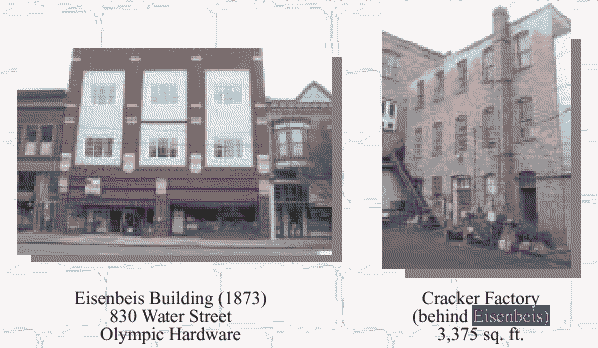 1003-1009 Water Street 1003-1009 Water Street
West
Half: Grocery and Provisions
1889:
Two brick stories were added to the building. Schroder
& Whiteway architects,
McFee carpenter work.
1903:
New Eisenbeis Hotel with Mrs. Maynard leasing the
hotel.
West
Half: Grocery store becomes restaurant.
East
Half: H.A. Wright leased storefront that was
previously the Mint Saloon.
1907:
Rose Theater in one of the storefronts.
1911:
Movie picture house (not the Rose).
1913: Unused theater converted
into a “modern” storefront.
1916:
Olympic Hardware.
1937:
Remodeling for the Olympic Hardware Store to expand
and add furniture to their
line
of goods.
1942:
Fire destroys much of the (now) Delmonico Hotel and
apartments upstairs.
1956: Major “facelift” to building
demolished the old bay windows.
1977: Paula and Albert Amel
purchased the building and business.
2003: Albert Amel died and the
family sold the property.
2007:
New owners began major renovations to restore the bay
windows and three store
fronts
as well as add a mezzanine and condominiums on the
upper floors.
Eisenbeis
Stone Block
702 Water Street
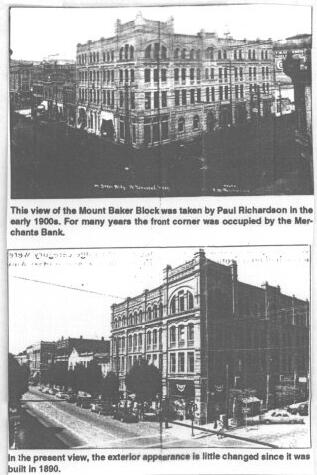 Old
Address 220 Water Street Old
Address 220 Water Street
O.T. Block 42 Lot: 1
Built 1884 by Charles Eisenbeis
1882: Cellar for the building was dug.
1884: Building still under construction as of July.
1884: By October Louis Wolff’s saloon occupied the
building.
1911: Last of several saloons at this location closed.
1920: George Miskin’s Second Hand Store.
1930 -
1970: Plumbing Store.
1974-
1982: Puget Sound Power and Light Company.
1984: Earthenworks Gallery
Eisenbeis
Cracker Factory
830 Water Street, behind 825 Washington Street
Behind 234 Taylor Street, Building at rear on its own lot
(Originally 316 ½ Water Street in 1911) Block 41, Lot 8 (S
52’5)
Date of Construction: 1888 Architect/Builder: Unknown
Charles Eisenbeis, the first Mayor of Port Townsend was
born in Prussia and trained as a baker. In his early days
in Port Townsend he worked with both E. S. Fowler and J.F.
Bloomberg in their bakeries before establishing himself as
owner in his own business. He later worked with S. Stork
in the bakery referred to as Eisenbeis and Stork. The
bakery specialized in ship’s bread, biscuits and hardtack
for ocean -going vessels.
The building known as the Cracker Factory was built behind
the Eisenbeis Block and is hidden in the interior of the
block, the only access is from an alley off of Washington
Street.
1888: The 1888 Sanborn map shows the building but notes
that the building was not yet finished. The building is
significant as an example of a utilitarian commercial
building from the town’s boom period of the late 1880s to
early 1890s.
The building has been variously identified with addresses
associated with Water, Taylor and Washington Streets, each
time as behind a primary building fronting on one of these
streets.
Historically, its association was to the Eisenbeis Block
at 830 Water Street, but it is now on its own parcel. For
most of its history, the building served as storage for
the furniture and hardware store in the Eisenbeis Block
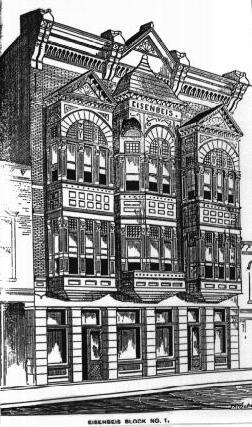
Eisenbeis Wood Building
(Common Names: U.S.
Customs House, Lighthouse Café)
955 Water Street Old Address: 339 - 341 Water Street
O.T. Block 9, Lots 7 & 8 Date of construction:
1878 Builder: Charles Eisenbeis By the last half of 1878
Charles Eisenbeis had completed the two story wood
structure. December 1878: The U.S. Customs House was moved
to this location, their previous site being advertised for
rent.
1885: With the Customs House still at this location, the
east side of the building was leased to Noland and Zen, a
dry goods store.
1878
-
1885: The upstairs portion of the building was being used
as a boarding house.
1890: The Commercial Hotel replaced the U.S. Customs House
and boarding house accommodations. The Axtell Saloon was
operating on Water Street frontage as well.
1907: John Mehling moved his tailor shop to the building
and also sold tobacco. A restaurant was being operated in
the east half of the building.
1912: Peter Erickson was operating a shoe and harness
repair shop next to Mehlings Tailor Shop.
1915: Mehlings had been replaced by a restaurant.
1930s: The Coffee Cup Café was operating at this location.
1940s: The building housed the Italian Café and Hampden
Brown’s Electric Shop.
1968: The Lighthouse Café has been operating at this
location since 1968.
|





 On February 12, 1878, Charles was
elected as the first mayor of the Port Townsend, serving
three terms. He was also twice the treasurer of the city
and member of the Health Commission . The article "a
History of the state of Washington" written by
H.K. Hines published in 1893 ends thus: here is summary
the life of the most representative man of Port Townsend
that with his perseverance, his ambition, the senses of
business has conquered poverty, has made a real fortune
and has acquired a respectable worthiness. Others,
however, have been far less kind. During the depression
of the 1890's, America took it's first step to the
socialist left. Leftist, denouncing all businessman as
greedy and labeling productive citizens as "Robber
Barons". This social mood continued to cause great
problems for businessmen, and many businesses in Port
Townsend failed. With the decline in business, the
planned railroad line bypassed Port Townsend
contributing further to the decline business. In
anticipation of the railway, Charles built the
magnificent "Hotel Eisenbeis" with 120 bedrooms and 250
meter of veranda overlooking the proposed railroad
terminal. The hotel never opened and was later
suspiciously destroyed by fire. As a major holder of
property in Port Townsend, Charles was hit more severely
by the depression than other local businessmen. To
continue paying for the services demanded by the
socialists controlling the city at that time, property
taxes were imposed and continued to increase.
On February 12, 1878, Charles was
elected as the first mayor of the Port Townsend, serving
three terms. He was also twice the treasurer of the city
and member of the Health Commission . The article "a
History of the state of Washington" written by
H.K. Hines published in 1893 ends thus: here is summary
the life of the most representative man of Port Townsend
that with his perseverance, his ambition, the senses of
business has conquered poverty, has made a real fortune
and has acquired a respectable worthiness. Others,
however, have been far less kind. During the depression
of the 1890's, America took it's first step to the
socialist left. Leftist, denouncing all businessman as
greedy and labeling productive citizens as "Robber
Barons". This social mood continued to cause great
problems for businessmen, and many businesses in Port
Townsend failed. With the decline in business, the
planned railroad line bypassed Port Townsend
contributing further to the decline business. In
anticipation of the railway, Charles built the
magnificent "Hotel Eisenbeis" with 120 bedrooms and 250
meter of veranda overlooking the proposed railroad
terminal. The hotel never opened and was later
suspiciously destroyed by fire. As a major holder of
property in Port Townsend, Charles was hit more severely
by the depression than other local businessmen. To
continue paying for the services demanded by the
socialists controlling the city at that time, property
taxes were imposed and continued to increase. Charles' tax assessment for
1890 was reported to be $82,525.00. But Charles remained
optimistic and refused to abandon his town. Even with
much of the business ventures failing, Charles and his
friend Joe Kuhn donated property and building materials
for construction of
Charles' tax assessment for
1890 was reported to be $82,525.00. But Charles remained
optimistic and refused to abandon his town. Even with
much of the business ventures failing, Charles and his
friend Joe Kuhn donated property and building materials
for construction of  Hospital in
1890, and in 1892, Charles used the last brick produced
by his brickyard to construct a magnificent main home of
three floors in brick and stone, with a roof in slate
and with the best comfort of that period in which he
will live with his family to finally rest after a well
active 35 years long life of a pioneer. Charles died 9
March 1902, survived by eight children and his second
wife. The day of funeral, the family received a telegram
announcing the death of Charles' brother, Frederick, who
had remained in Steilacoom. "The newspaper, "Morning
Leader" stated in a column in its 13 March 1902 issue
that there was a special town council meeting was called
to eulogize Charles Eisenbeis".
Hospital in
1890, and in 1892, Charles used the last brick produced
by his brickyard to construct a magnificent main home of
three floors in brick and stone, with a roof in slate
and with the best comfort of that period in which he
will live with his family to finally rest after a well
active 35 years long life of a pioneer. Charles died 9
March 1902, survived by eight children and his second
wife. The day of funeral, the family received a telegram
announcing the death of Charles' brother, Frederick, who
had remained in Steilacoom. "The newspaper, "Morning
Leader" stated in a column in its 13 March 1902 issue
that there was a special town council meeting was called
to eulogize Charles Eisenbeis". 
 he Jesuits stuccoed over the
bricks of the original portion to give the building a
more uniform look. They named the complex "Manresa Hall"
after the town in Spain where Ignatius Loyola founded
the order. The Jesuits left in l968 and the building was
converted into a hotel, known as
he Jesuits stuccoed over the
bricks of the original portion to give the building a
more uniform look. They named the complex "Manresa Hall"
after the town in Spain where Ignatius Loyola founded
the order. The Jesuits left in l968 and the building was
converted into a hotel, known as 

 1003-1009 Water Street
1003-1009 Water Street

